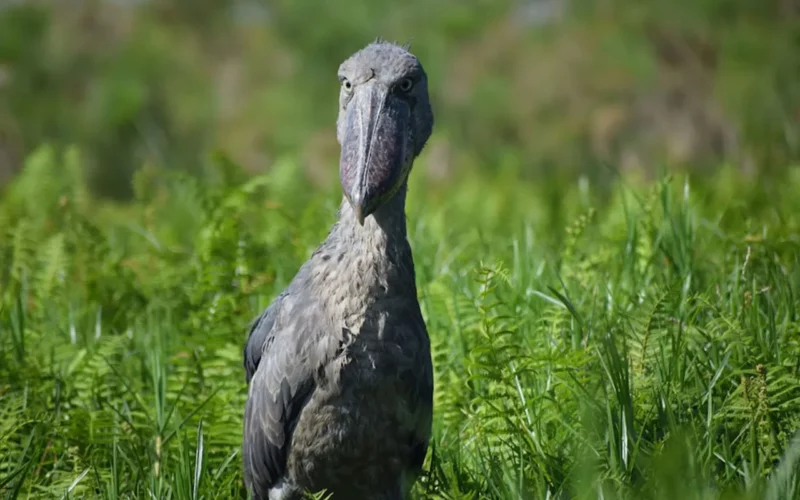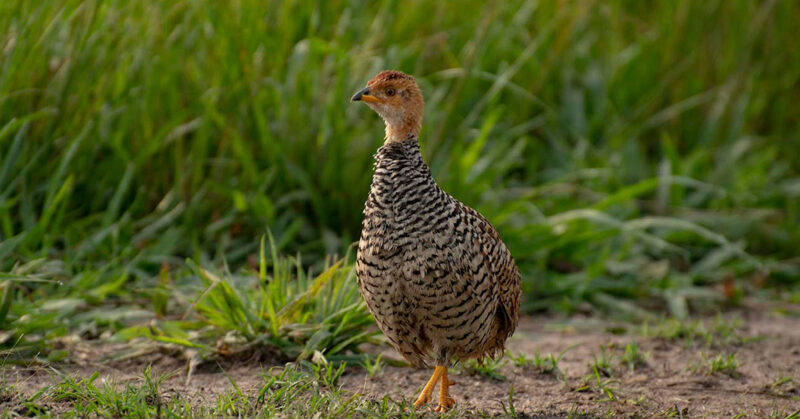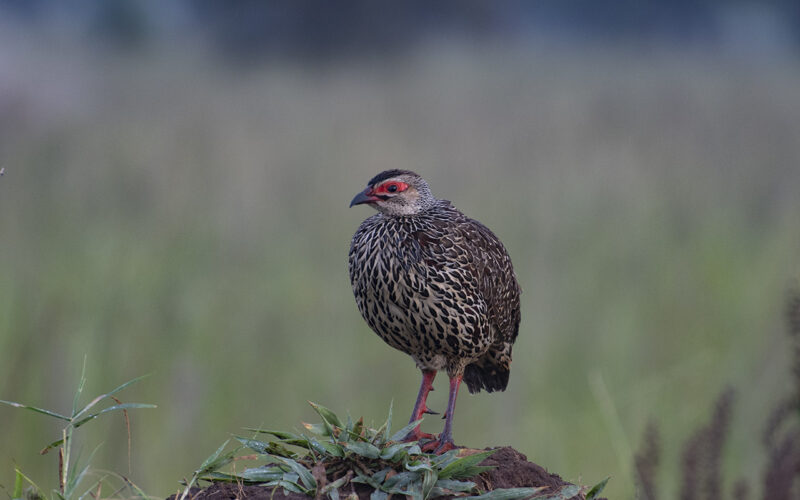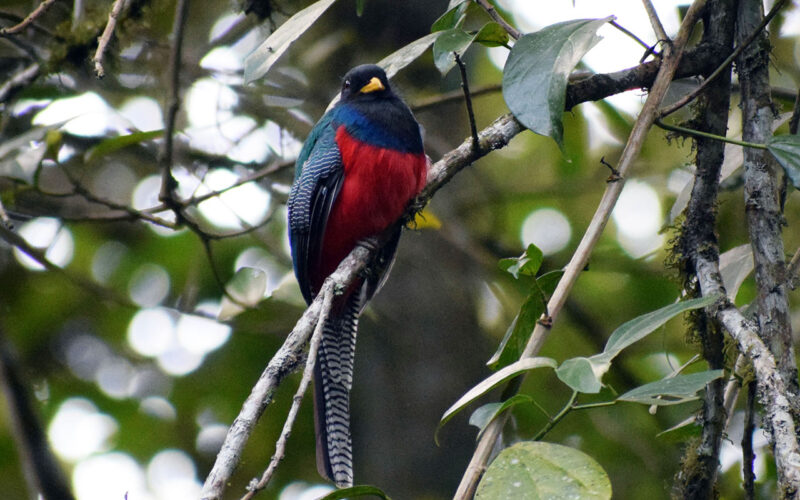A birding safari to Uganda is a rewarding experience to explore Africa’s richest biomes/habitats that converge here. These bird-rich habitats include expansive wetlands, savanna grasslands and woodlands, tropical rainforests and lowland forests hosting a checklist of over 1080 species, an impressive list given Uganda’s size. Uganda’s geographic location along the equator ensures an all-year round pleasant weather that is locally influenced by it’s high-altitudes where the bulk of the country lies above 100m asl.
And with a safe security record and improved infrastructure linking up all the country’s top birding hotspots, Uganda is an an all-year round birding hotspot on the continent.
Uganda’s Birding Profile
- Country Size: 236000 km 2
- 1080 Bird Species: (50% African Bird species)
- 2 Endemics: Fox Weaver (Ploceus spekeoides) and Karamoja Apalis (Apalis karamojae)
- Altitude: 600-5010m
- Wet season: April-May and Oct-November
- Average Temperature: 18o-35o

Uganda’s Diversity of Bird Habitats
Uganda birding safaris explore a wide variety of habitats that include major African biomes that converge here. These habitats include lowland forests, afro-montane and highland rainforests, extensive savanna woodlands, grasslands and extensive marshes around numerous lakes and rivers. Due to their ecological importance, these varied habitats are recognized and protected as Important Bird Areas (IBA), Ramsar Sites and birding hotspots for unique species restricted to these areas.
Duration of a Uganda Typical Birding Safari
On planning a birding trip to Uganda, one important factor to note is your experience with birds of East Africa. This is to help you on where to go birding and what to expect from there. Other than that, an all round Uganda birding trip largely depend on the time and resources you have on your hands. For example, a first time birding visitor to Uganda and the East African region will need a minimum itinerary of over 21- Days to exploit various habitats, from semi-arid grasslands and scrub of the east for the country’s two endemics, to wetlands for a Shoebill and on through the savannas to rainforests in the south west Uganda for the Albertine endemics. And for birders with an experience from other East African countries, a specie-focused itinerary targeting the biodiversity-rich of the Albertine rift and western Uganda tropical forests would be a rewarding birding experience.

Uganda’s Top Birding Hotspots – Where to go birding
-
Birding Entebbe and Environs
A typical birding safari to Uganda usually starts and ends at Entebbe, also Uganda’s gateway to the world. This pleasant colonial town of Entebbe boasts of a series of bird-friendly hotels and is often used as a base for most visitors to Uganda before they set out to explore the rest of the country. As a peninsula on Lake Victoria, Entebbe is a birding hotpot with patches of tropical forests and wetlands where the century old Entebbe Botanical Gardens provides an introductory birding to Ugandan birds.
West of Entebbe town, is the extensive marsh of Mabamba known for its reliable sightings and encounters of the prehistoric Shoebill. Mabamba is a part of the extensive wetlands that flank the shores of Lake Victoria and extending along the floodplains of the Nile where the conic Shoebill (Balaeniceps rex) breed. These marshes also host Lake Victoria biome species including the Papyrus Gonolek (Laniarius mufumbiri), Northern Brown-throated Weaver, Carruthers Cisticola and more.
Other hotspots around Entebbe include Lutembe Bay, known for a variety of Pearlartic migrants, and local waders.
-
Birding Mabira Forest and Mt.Elgon on an Eastern Uganda Birding circuit
The moist tropical forest of Mabira hosts forest proper specialists across its different forest structures, while on wards the flooded rice fields hosts several waders notably the African Spoonbills and more.
Coming on the free-standing and ancient volcanic mountain of Mount Elgon National Park, birding here exploits the highland rainforest and other vegetational zones that host Hartlaub’s Turaco, Hunter’s Cisticola, Golden-winged Sunbird and more forest proper species.

-
Birding the Semi-arid region of Karamoja and Kidepo Valley NP
Uganda’s birding hotspots on this stretch include the expansive wooded grasslands of Pian Upe Reserve, known for sizable populations of Uganda’s endemics the Fox weaver and Karamoja Apalis along a great selection of dry country specialists. Further north, the foothills on Mt. Moroto, Matheniko and Bokora wildlife reserve host numerous of the Somali-Masai biome dry-country specialists typical of greater Horn of Africa on their western range. Highlights include, Common Ostrich, Secretary Bird, Fox Kestrel, Hartlaub’s Bustard, Northern White-crowned shrike, White-browed and Chestnut-crowned Sparrow-Weavers, White-headed, red-billed and White-billed Buffalo Weavers, Eastern paradise and Straw-tailed Whydahs and more. The circuit covers the wilderness park of Kidepo Valley National Park.
-
Birding Murchison Falls NP and Budongo Forest
The eastern birding circuit joins the western and central birding circuits at Murchison Falls NP that a wide range of habitats, from grasslands and woodlands unique to the Sudan-Guinea biome, to wetlands on the Nile delta, to woodlands and the lowland forest cover on Budongo Forest. Highlights here Abyssinian Ground Hornbill, Red-throated Bee-eater, Pygmy and Beautiful Sunbird, Piapiac and more that are on their southern range limit.
The popular Royal Mile at Budongo Forests is regarded as Uganda’s best birding hotspot for a dozen or so of iron wood specialists only known from this stretch these include, Chocolate-backed Kingfisher, Yellow-footed Flycatcher, Ituri Batis, Chestnut-capped Flycatcher, Tit-hylia, Rufous-crowned Eremomela and more.

-
Birding the South-west to Western Uganda
The south-west to western Uganda birding circuit is s far the best birding route on any Uganda birding itinerary. This route explore premier birding hotspots that stretch from the low-lying woodlands of Lake Mburo National Park to ancient montane rainforests, lowlands and savanna woodlands that lie within the Albertine Rift Valley. These birding hotspots include the montane forests of Echuya, Mgahinga Gorilla NP and the rainforest of Bwindi Impenetrable Forest National Park that collectively host up to 24 Albertine Endemics and other high-altitude forest specialists.
The birding circuits further explores the bird-rich diverse habitats of Queen Elizabeth National Park that include open water surrounded with marshes, grasslands and woodland that boats a checklist of up to 600 species! From the hot savannas of Queen Elizabeth NP, the circuit explores Kibale Forest National Park also known as the primates capital for its 13 species of primates. Here, the top highlight is the shy Green-breasted Pitta that roams the forest floor but the forest host other proper specialists.
The western birding itinerary, then explores the bird haven of lowland forests of Semuliki National Park that lie along the northern foothills of the towering Mount Rwenzori mountain ranges. These forests are easterly extension of the great Congo Forest with a great collection of bird specialists on their range limit and only known from these lowland forests.
-
Seasonal Palearctic and Intra-African Migrants
Uganda lies on the migration corridor where thousands of species migrate through on their north-south route. These will assemble in their millions in extensive wetlands, estuaries and crater lakes in the rift valley. Some that choose to winter around occur in woodlands, forest and across savanna habitats. Highlights include a million congregation of Lesser Flamingo (Phoeniconaias minor), White-winged Black Terns, Western Wagtails, Booted Eagle, Grasshopper Buzzards and more. Other migrating species across and into Uganda include several regional intra-African migrants and local altitudinal migrating species.
